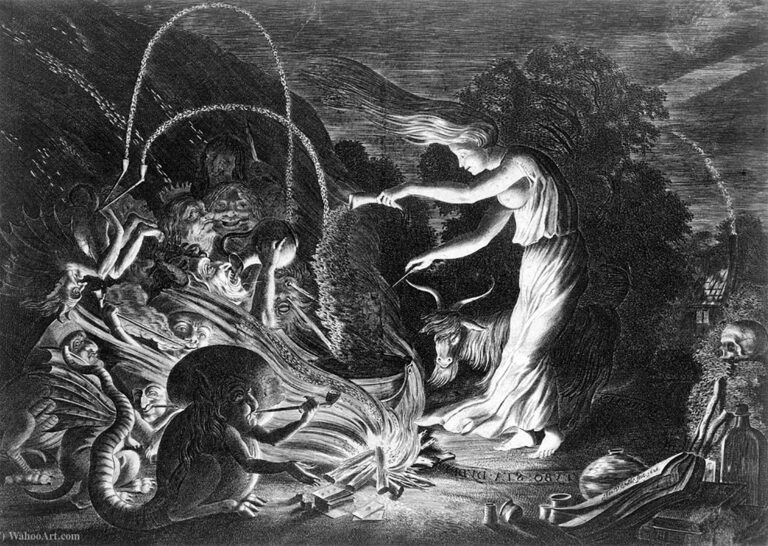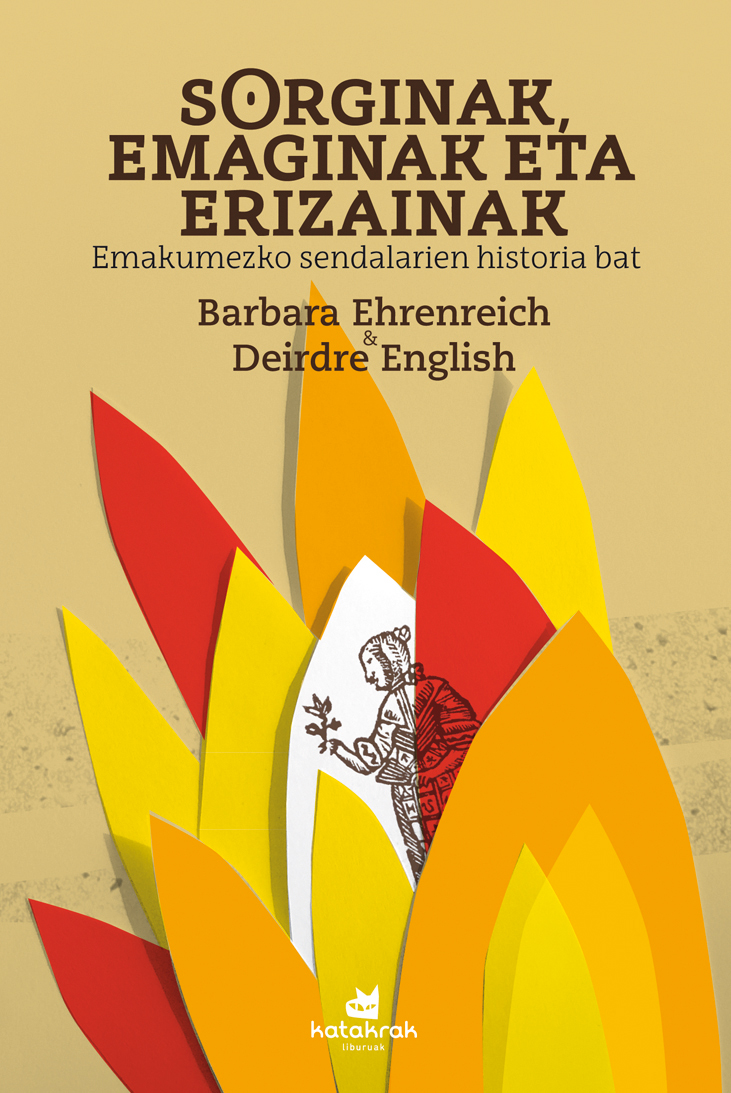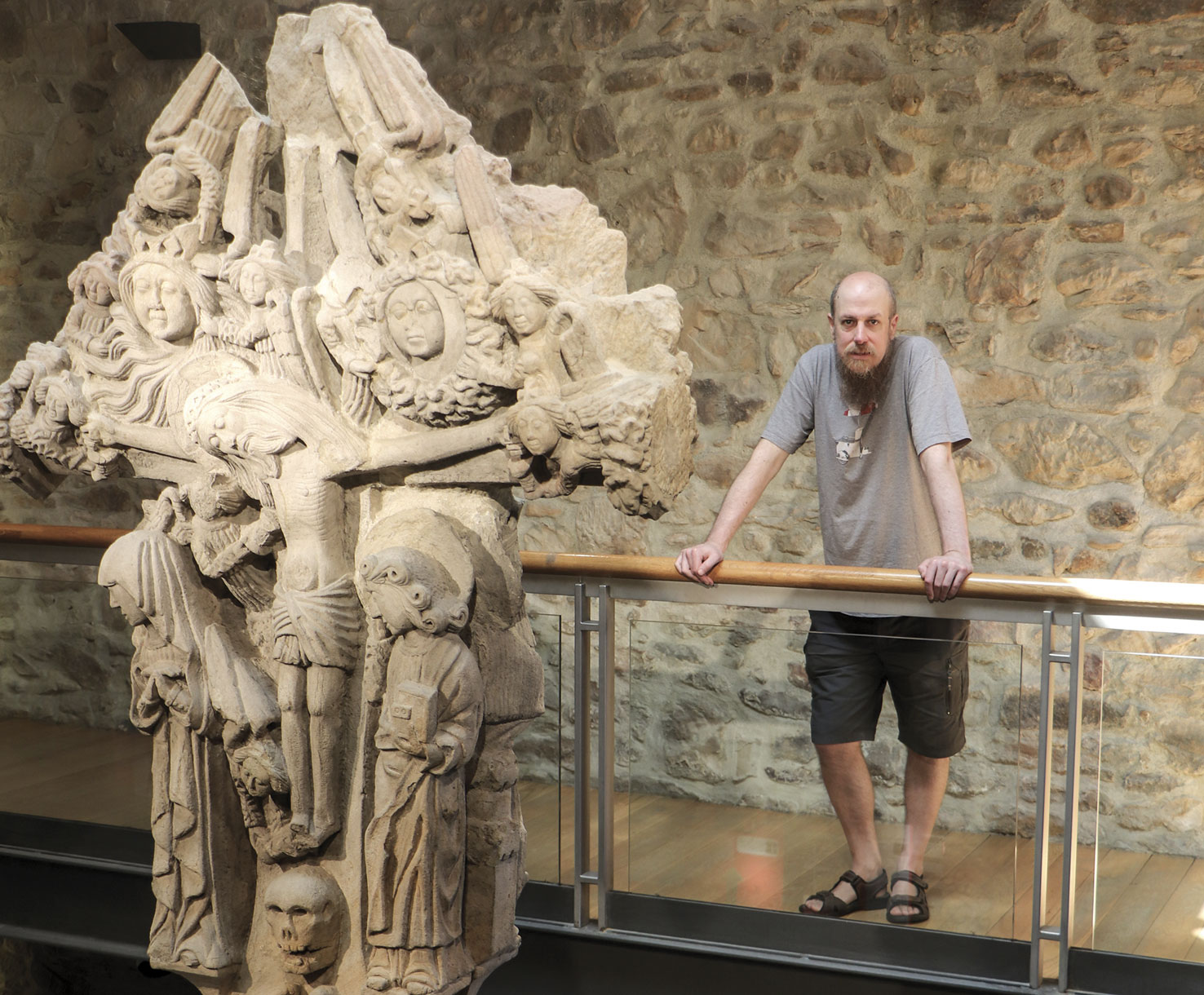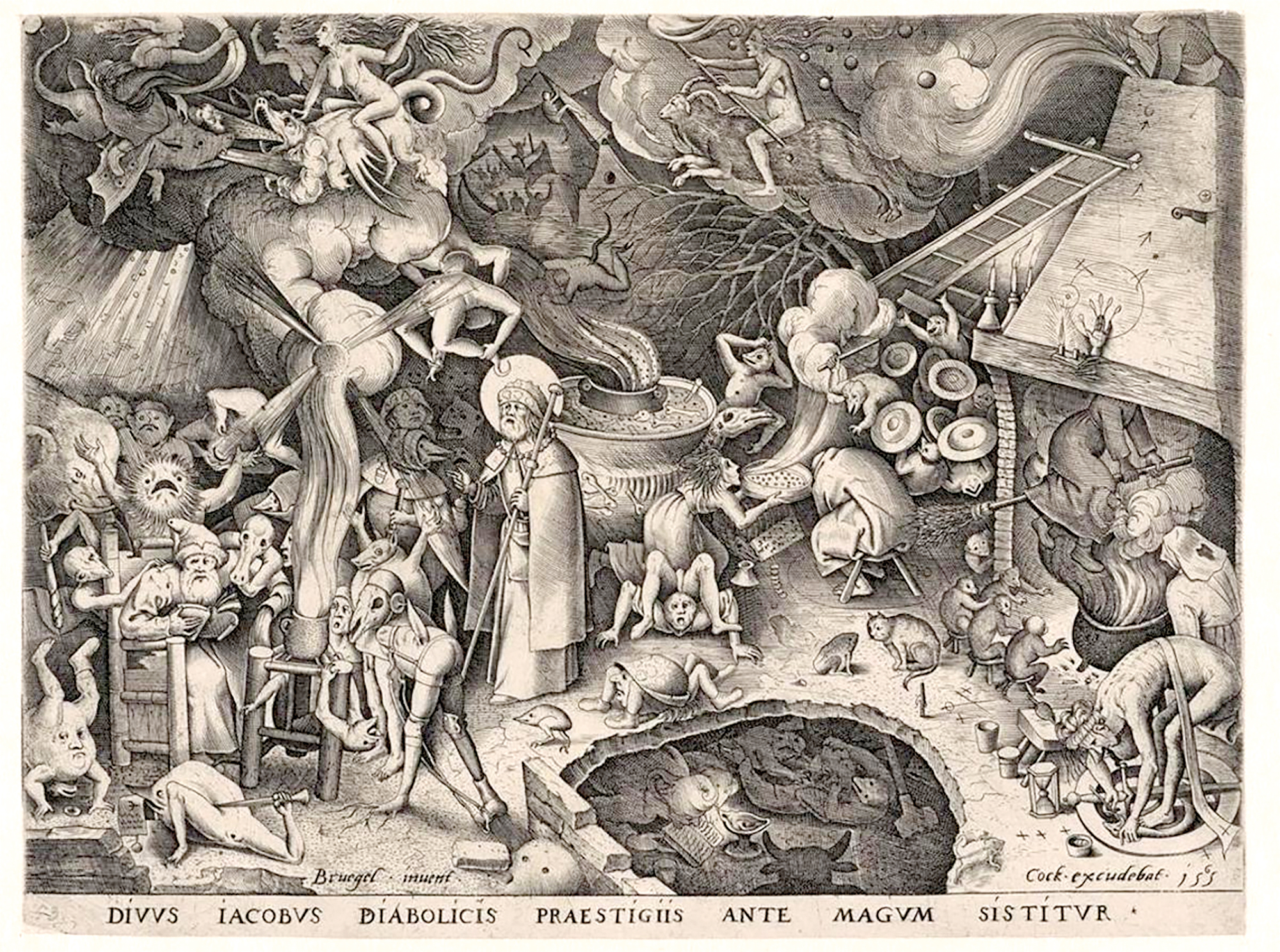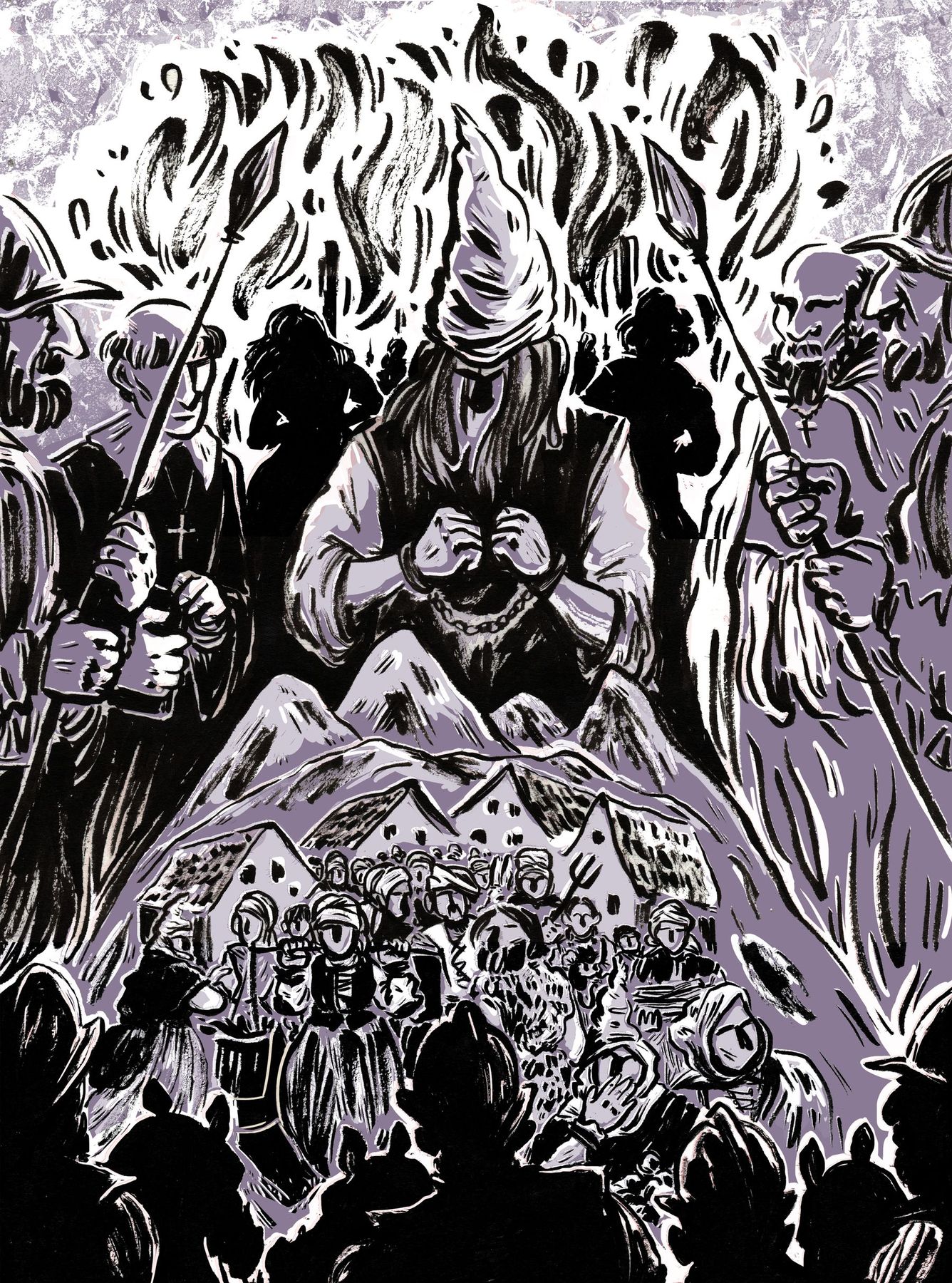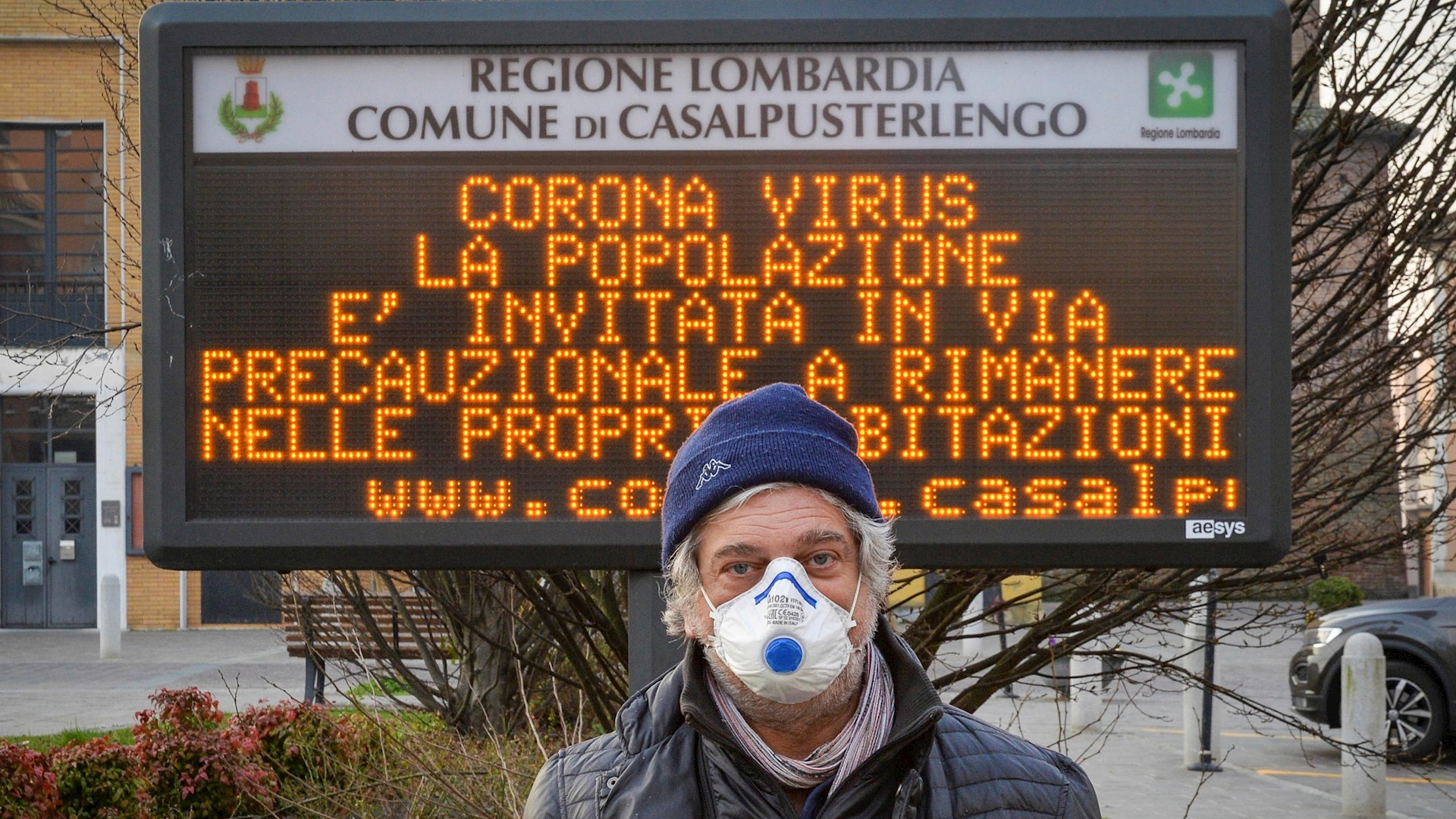"Inquisition saved many people here in the Basque Country, to witchcraft."
- Paul Arzak has explored thousands of documents in the last 53 years. The 443 page Witchcraft collects data from hundreds of witchcraft processes that have taken place in Navarra in our hard book and the main conclusion it draws is XV-XVI. That the massive accusations of witchcraft of the centuries had more from assembly than from truth. Reasons: great economic, political, social interests and even conflicts between individuals. Nothing new under all fogs.

Juainas Paul Arzak. San Sebastian, 1950
Degree in History from the Autonomous University of Barcelona. In 1987 he published the History of the Basque Country. He is a member of the Bidasoa Research Centre. He has been a teacher for years, particularly in High School, until his retirement twelve years ago. He is the author of numerous articles and research. Witchcraft, border and power (Collection, 13, 1999), year 1610. His most famous works are El aquelarre, a fortunate invention (Gerónimo de Uztariz, 23-24, 2008) and El aquelarre on the evil mystification of the spell in Navarra.
He has been researching the subject for many years. Is there a lot of documentation? In Navarre, fortunately. At the time of the conquest of Navarre, and afterwards, there
was a competition debate on what power it was to judge the complaints of witchcraft. Therefore, many cases of witchcraft were tried here and these civil processes can now be found in the General Archive of Navarra. They are generally more interesting than inquisitorial ones and, in addition, much richer to understand the social context. In other places, such as Logroño (Spain) or Simancas (Valladolid, Spain), much documentation was lost.
We also have abundant bibliography. The Danish study, Gustav Henningsen, among others, is noteworthy. He is one of the world’s largest experts in the phenomenon of witchcraft and passed his documents and bibliographic funds to the UPNA last year.
It says that traditional witchcraft and witchcraft groups are not the same thing. What's the difference? You can't tell exactly when belief about
witchcraft started. As evidence of this, prehistoric images that appear in the caves can be considered, or at least interpreted. On the contrary, these beliefs have not ended, but they have evolved.
According to traditional witchcraft, storms or bad crops were caused by witches. The crazy witch hunt that spread throughout Europe in the 16th and 17th centuries is very different. The researchers of Hugh Trevor-Roper and Gustav Henningsen called bush craze and brujomania respectively; it can be considered as the collective witchcraft of Julio Caro Baroja, and I propose that collective witchcraft be used in Basque.
"In cases of witchcraft, the inquisition was more rational than its civil judges"
When was the highest time of this fever? XVI-XVII. for centuries. This group witchcraft that extends throughout Europe in the 16th century reaches here entering Baja
Navarra. For years, they created a model with all the accusations of Jews, heretics, gypsies or caresses, which they would then apply to the alleged witches. Killing the children, stealing, destroying the crops, flying -- they were accused of such nonsense, and the image of group witchcraft emerged.
In the 15th century there was a terrible epidemic. Half of the Navarre population died, as demonstrated by historian Peio Monteano. In addition, they were tough years and people wanted to know why or by whom all these evils were produced.
I define three floods or bursts in the expansion of the spell, for 130 years. The first flood runs from 1525 to 1540. The persecution of witches in the Upper Navarra of 1525 took place in two areas: from January to August in the east (Valle de Erro, Aezkoa, Salazar and Roncal), under the responsibility of Pedro de Balance, of the Royal Council, thirteen people and about 25 soldiers searching for witches. Then, starting in August, they went west and explored some councils in the Doneztebe area. Behind this are internal conflicts and conquest, political, social and economic interests, confrontations between lords and subordinates, or anger among citizens. All of them fed the allegations, as was happening in nearby territories (Jaka, Ribagorza, Tena Valley, Occitania…)
The second flood runs from 1540 to 1575 and the third from 1575 to 1620. In the latter, I see very interesting relationships between some names. I risk too much, but I associate the succession of accusations in the valley of Araitz with that of Lapurdi and that of Baztán Bidasoa, that is, with the process of Logroño in 1610.
I can't prove it, but I see relationships between important characters like Fray León de Aranibar, abbot of Urdazubi, wealthy and powerful, who at the same time got money to pay spies for Castile. This was in connection with Andueza, Permanent Mayor of Araitz, Mr de Urtubia-Altzate and other authorities controlling the currencies of Navarra. They also made a lot of money by building the City of Pamplona. It could be compared to the works of the current high-speed train, where there were also many economic and political interests at stake. All these men formed a great network and great influence. A plot capable of making a movie. In this context, the reports of witchcraft proliferated there and here, in many cases depending on those interests, until the Inquisition calmed everything down.
Calm the inquisitions? The inquisition saved many people here in the Basque Country because of the spell. This has been said by Henningsen for a
long time and it is true: in cases of witchcraft, the inquisition was more rational than the local civil judge. For example, they did not accept the testimony of the children. In the important Logroño lawsuit of 1610 there were three inquisitors. Two believed what was said in the accusations, but the third, Salazar and Frias, had doubts. This was known as the "witch attorney."
Salazar and Frías were supported by the bishop of Pamplona. This bishop was Venegas and Figueroa and from the point of view of the Inquisition was not just anyone: he took the post of bishop of Pamplona in 1606, after being a member of the table of the Inquisition Major in Madrid since 1600. During the few years Venegas had been in the position, he came into contact with the locals and showed the respect and desire to collaborate with their culture. Thus, in 1609 and 1610 he organized poetry competitions in Basque. Henningsen highlights in his biography this bishop's personal investigation of the spell and, above all, skepticism regarding the collective spell.
.jpg)
"They began to say that the devil worked well with women and that's why they had the ability to drive crazy, get sick or kill people staring."
How was the case in Logroño? The Logroño Faith Auto of 1610 was terrible. About 30,000 people gathered in a city of 10,000 inhabitants. The assembly of the faith order aimed to perform acoustic representations to publicly show the trial and conviction of the criminals. In Pamplona
the executions also lived as parties. The prison was in San Francisco Square, where the library is currently located, and from there, among the sounds of the trumpets, they took the witches to the Taconera to smoke in front of the public.
In Logroño, 53 people from Zugarramurdi were tried and eleven of them were sentenced to death in flames, after which the group of madness spread tremendously. A stone was lifted and fourteen witches appeared everywhere. Salazar and Frías say that at one point in Baztan-Bidasoa had reported 2,000 and peak children as witches. What was going on? Almost 30 per cent of the population of Zugarramurdi and 60 per cent of the Donamaria council were charged. Does that mean that six out of ten people were witches? The chief inquisitor Rojas couldn't believe it.
In the months after the verified car a kind of fever was created throughout the region, so the Inquisition Council commissioned Salazar and Frias to visit the mountains of Navarra to gather first-hand information and testimonies. In addition, he gave him an order: not forcing the declaration and not threatening the cases in which he was questioned. From May 1611 he traveled the area for almost eight months in the midst of witchcraft fever. He collected thousands of unsubstantiated and contradictory testimonies, unable to find solid evidence of what the Akelarres happened.
This investigation and the attitude of the general inquisitor Bernardo de Sandoval y Rojas, former bishop of Pamplona years earlier, were decisive in putting an end to this group of crazy people.
Did it come with the 1614 Silence Edict? The inquisition published this edict to ban the talk of witchcraft. This brought an end
to this process and to the flooded accusation. From there some cases were tried for injuries, but individually.
The burning of witches ended in Spain in 1614. He was one of the first countries to do so. Then there was a decline in witch hunting, just as it rose. It wasn't sudden and didn't match everywhere. After the harsh religious wars among Christians, a certain period of coexistence came: the states were strengthened and the borders between them were consolidated, the sciences made history and opened the door to the Enlightenment. In general, if in the Spanish State during the calm of 1614 the Catholic Church and the Inquisition had great importance in the initiatives to calm the persecution of witches, in the French State they had kings and cuts, while in Poland the persecutions of witches were reinforced between 1676 and 1725, and in Hungary it was terrible between 1710 and 1750, for example.
Ideas about collective witchcraft were flowing and adapting from the highest levels of society. What in the 15th and 16th centuries was especially represented by pleas and sermons in the 17th and 18th centuries was, in general, inverse. The high society was approving a mechanistic and Cartesian philosophy, while the barriers between the different social levels are widened. The humble citizens began to return to the belief of traditional charms and the sages, for their part, considered it a despicable superstition.
.jpg)
"The akelarre is a lie. Some places where the Aker grassland was used were called mountain slopes and abrupt places where only goats were walking"
Why didn't the spell spread as far as here in other parts of the
peninsula? Because they had other ‘enemies’: Jews, Moriscos... Witchcraft was developed mainly in Galicia, here and in the Pyrenean area.
Did they speak in Basque in trials where the defendants were homeless? Yes, it is. All processes were conducted in Spanish. They needed translators
in almost every part of Navarra. The questionnaires and documentation were in Spanish and the testimonies showed few answers in Basque. Furthermore, we must bear in mind that they obtained the answers they sought through torture. Torture was accepted as a system. Mr de Falces, for example, says in a document that if we hand over five hours to the ruthless official Balance, sent by the Royal Council, it can pull witches everywhere. Basques accused of witchcraft, theft or other crimes were always unprotected.
What conclusions do you draw about the word akelarre? The akelarre is
a lie. In some areas, the Aker grassland was used to call the mountain slopes and the abrupt places where only goats were walking. In Gascuña, Landubouc or Baja Navarra, on many occasions boquelane was used. In my opinion, the abbot of Uzdazubia León de Aranibar and other leaders of the Araitz area began to say that there was a place, an aker pasture, where witches met. This name was spreading and only appears from Logroño. Thus, Sabath and other names were left out of the processes, although people did not use them. Around the year 2000, researcher Maite Lakar analyzed in depth the oral tradition of Baztán, Malerreka and Bortziriak, which shows that the word akelarre has never been widespread among people. Group witchcraft was another element to build these assemblies. This word was given a tone of contempt or exclusion, as has happened today with the word ‘zulo’. In Spanish they are the words ‘hole’ and ‘hide’, but when they use ‘zulo’ they do not indicate the same. In my image, the word akelarre did the same thing.
What other lies are around witches? The fireplace, for example. They said the witches were walking on the broom and out the fireplace. In Hego
Euskal Herria, however, only the large houses had a fireplace. Live bordes, cottages and town houses no. Such infections occur.
The setting of the so-called powers of the toad was also included in the assembly. And the same with women. To increase the risk of witchcraft, they promoted the rise of devil power. They began to say that the devil adapts well to women, and that's why they had the ability to drive crazy, sick or kill people staring. And they said that the woman was the older she was, and the more inclined, when she lost her period, they didn't wash blood, because they picked up all the poison in their eyes.
This collective hysteria spread from pulpit to pulpit.
For a matter of work, I had to reread this wonderful book. A short book that brings together feminist theory, genealogy and history, and that will surely have a lot of criticism looking on the net and, surprise! I found one, which Irati Majuelo wrote in Berria.El book published... [+]
The Christian religion ended the knowledge, wisdom and self-management of witches, imposing thought and, therefore, a certain life. They were tortured, raped and killed. With the intention of moving these religious convictions to every corner of Europe, many citizens engaged in... [+]
Ezin zenbatu sorginen inguruan egindako liburu, film, erakusketa, hitzaldi eta souvenirrak Euskal Herrian. Baina gehienetan ohiko galderak baino ez dira iradokitzen, ea emakume horiek zer egiten zuten, ea benetan elkartzen ote ziren akelarrean, ea zer droga hartzen zuten, ea... [+]
“Koronabirusak mundua lurralde ezezagun batera eraman du” esan zuen Munduko Osasun Erakundearen zuzendari nagusiak Covid-19ak zuzenean eragindako heriotzek 3.000ko langa gainditu zutenean. Planetako agintariak alor bat baino gehiagotan aurkitu dira bide-orri garbirik... [+]











